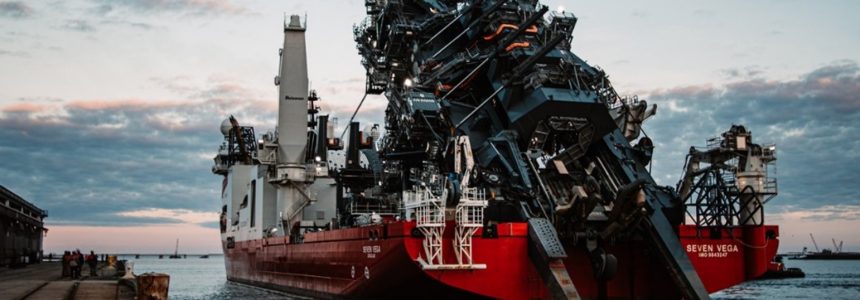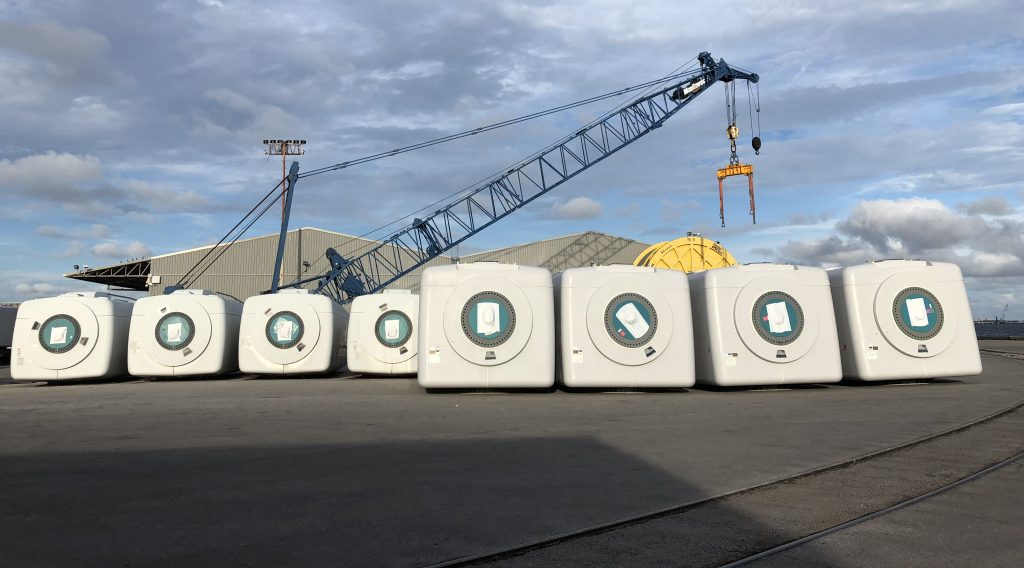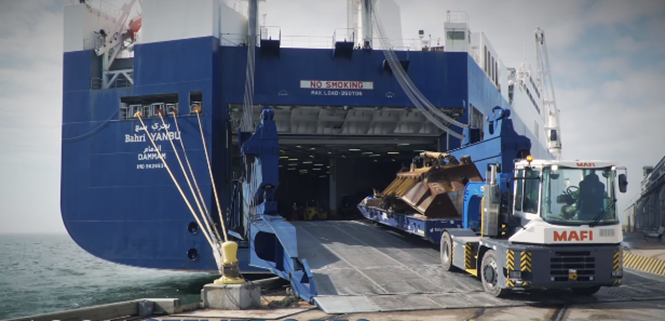News & Updates
Port Spotlight: On Deck at Port of Pensacola

The Port of Pensacola, sharing accolades with our port tenant family of companies, recently ranked the ninth most valuable deep-water port in the recent Seaport Mission Plan issued by the Florida Ports Council. Despite headwinds from the pandemic and Hurricane Sally, cargo tonnage and vessel dockage days increased in 2020 improving overall revenue by 13%. Cargo value passing through the port increased 419% with over $300 million in waterfront cargo being handled at the port in 2020 and in addition to cargo value, the port has also seen a 23% increase in waterborne cargo tonnage for Fiscal Year 2021.
The Port experienced key wins in several sectors including marine maintenance and repair overhaul (MMRO). Not unlike ST Engineering at Pensacola International Airport providing MRO services to major carriers, Offshore Inland Marine received the MMRO contract for conversion of Blue Origin’s (Amazon’s Jeff Bezos’ space exploration company) Jacklyn from a RO-RO vessel to an autonomous landing platform vessel – in short, a ship that catches rockets – pretty cool stuff. The Jacklyn is expected to remain in port into 2022 and the Offshore Inland lease for operation of a marine MRO at the port was extended to 2044. Long term potential for this project includes autonomous/ telerobotic vessel upgrade(s), conversion of landing platform #2, post-mission repairs and maintenance and permanent home port. Offshore Inland became an early success story in the port’s quest to blend traditional port functions and 21st century Blue Economy activities on the port’s 68-acre site.

Much of the Port’s dramatic increase in cargo value was driven by General Electric’s Wind Energy Pensacola facility and the import of components, including fully assembled wind turbine nacelles from South America. Pate Stevedore won a new multi-year contract for GE feedstock component imports and GE vessel traffic increased to 1 ship every three weeks coming from Mexico, South America and Asia. 100% of GE Pensacola production comes to port for storage prior to international export by ship or domestic export by truck or rail.

Cargo operations strengthened at the Port too. CEMEX’s lease for operation of a dry bulk cement import and distribution terminal was extended to the end of 2032 bringing additional lease revenue to the port and doubling cargo fees. A $1.5 million investment in vessel unloading equipment was made by CEMEX bringing new import vessel capabilities online.
Next up is Streamline Boats of NorthWest Florida – a key win for our Port in the light manufacturing sector. After signing a 40-year lease, Streamline will produce semi-custom center console boats and repurpose an existing, abandoned, hurricane damaged facility. This development brings Made in Pensacola craftsmanship and a company in the Blue Economy sector to the port advancing Port Vision Plan objectives.
On deck and championing the effort forward, planning work for the Portside Pensacola Vision and Reinvestment Strategy was guided by the citizens of Pensacola before the pandemic and resulting draft land use plans were shaped through an extensive public participation program. The plan envisions a development approach that continues to strengthen the port’s role as a regional economic driver while allowing for several future directions to occur based on market opportunities and community desire. Phase I of the plan promotes a mix of uses and while strengthening an industrial core needed and necessary for our economy to function as it explores new ways for the sea to help propel both our economic and social future.
The Portside plan is being implemented by the Port of Pensacola in phases over a multi-year period. On deck, in addition to preparation for reuse of 7-10 acres on the northeast quadrant of the port behind the gate, developers are currently working with the Port to transform a largely vacant and underutilized landscape into a thriving hotel resort destination on the waterfront of Pensacola Bay. Once construction commences, the development will bring 120 rooms to our market, create new event and meeting space and provide conference and visitor-serving amenities while building an important asset in downtown near the water’s edge.
Pensacola’s waterfront has been nearly 500 years in the making. VIA PENSACOLA magazine’s 1957 inaugural issue featured the Palmer Line S.S. Casa Blanca loading in Pensacola for its regular run between Pensacola and Cuba. The magazine’s decidedly amplified editorial called our port the greatest deep-water harbor of the South adding that the Port of Pensacola “has been known throughout the seven seas since hardy mariners first sailed into the Gulf of Mexico.” The editorial argued its strategic position on the mainland, backed by the rapidly growing industrial south and Midwest, and served by railroads, highways and the intracoastal barge canal, supports our Port’s present activity and guarantees its future. It’s all hands on deck as we promote and embrace a diversity of uses and align our infrastructure with opportunity as Port of Pensacola writes its next chapter.
